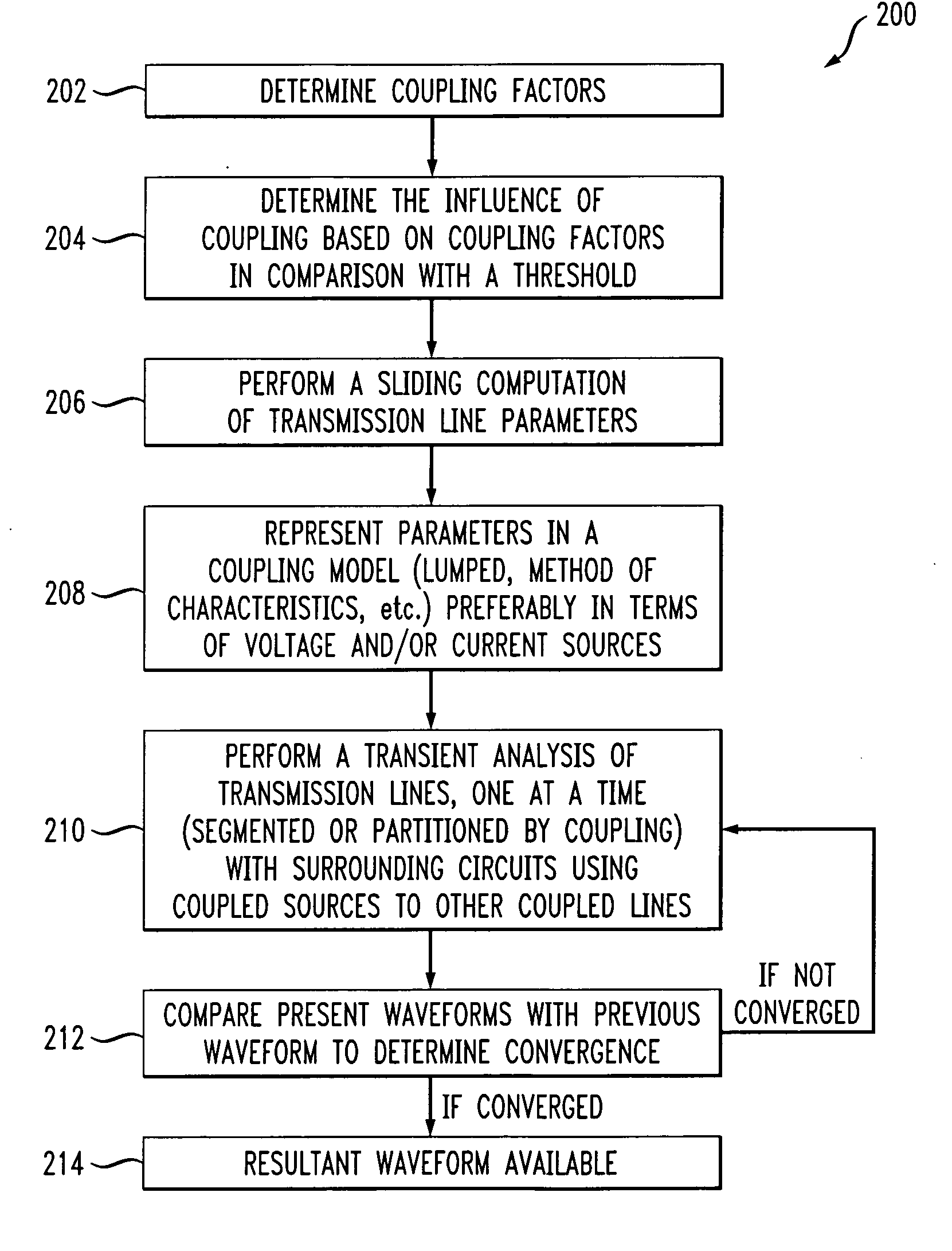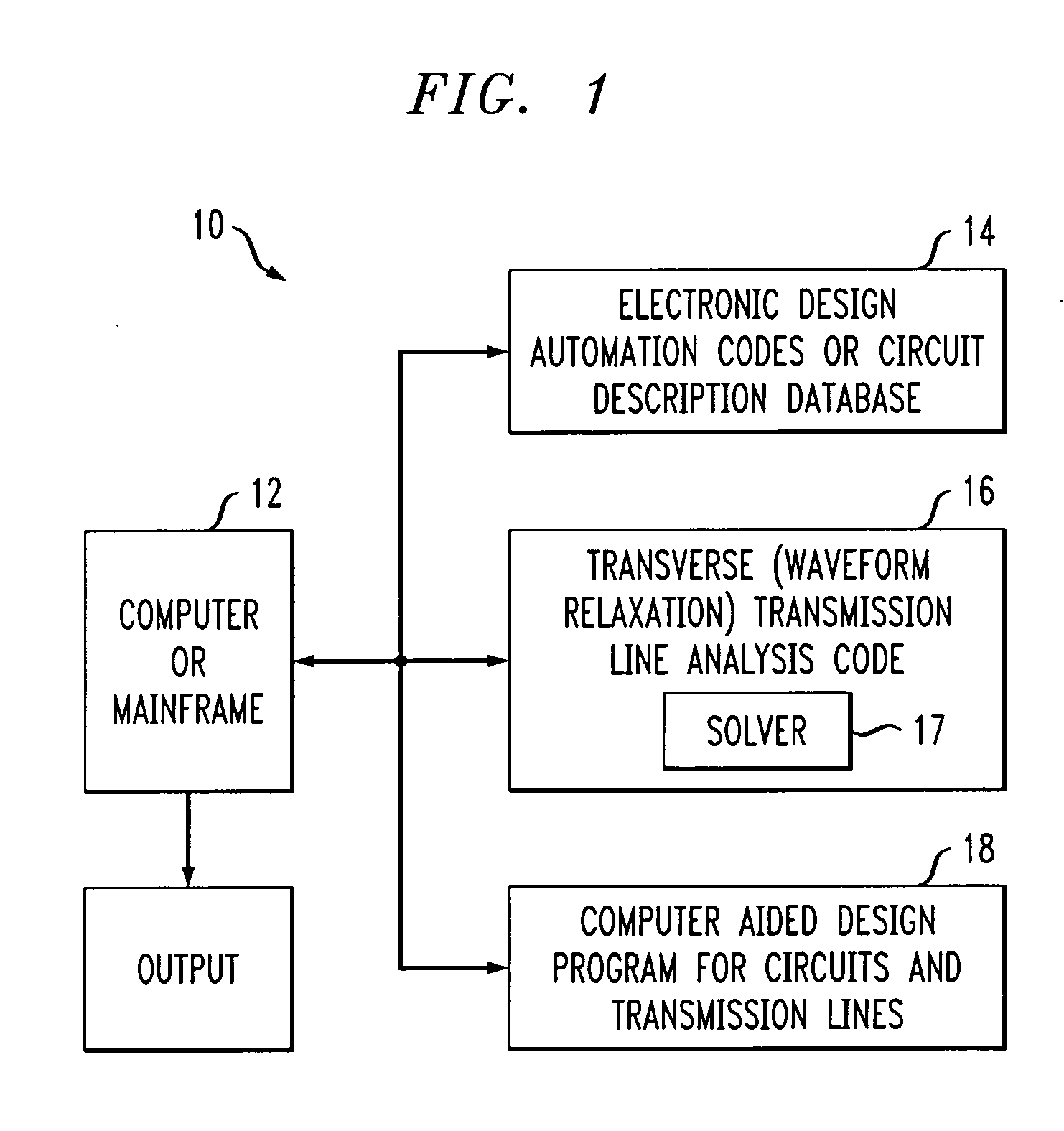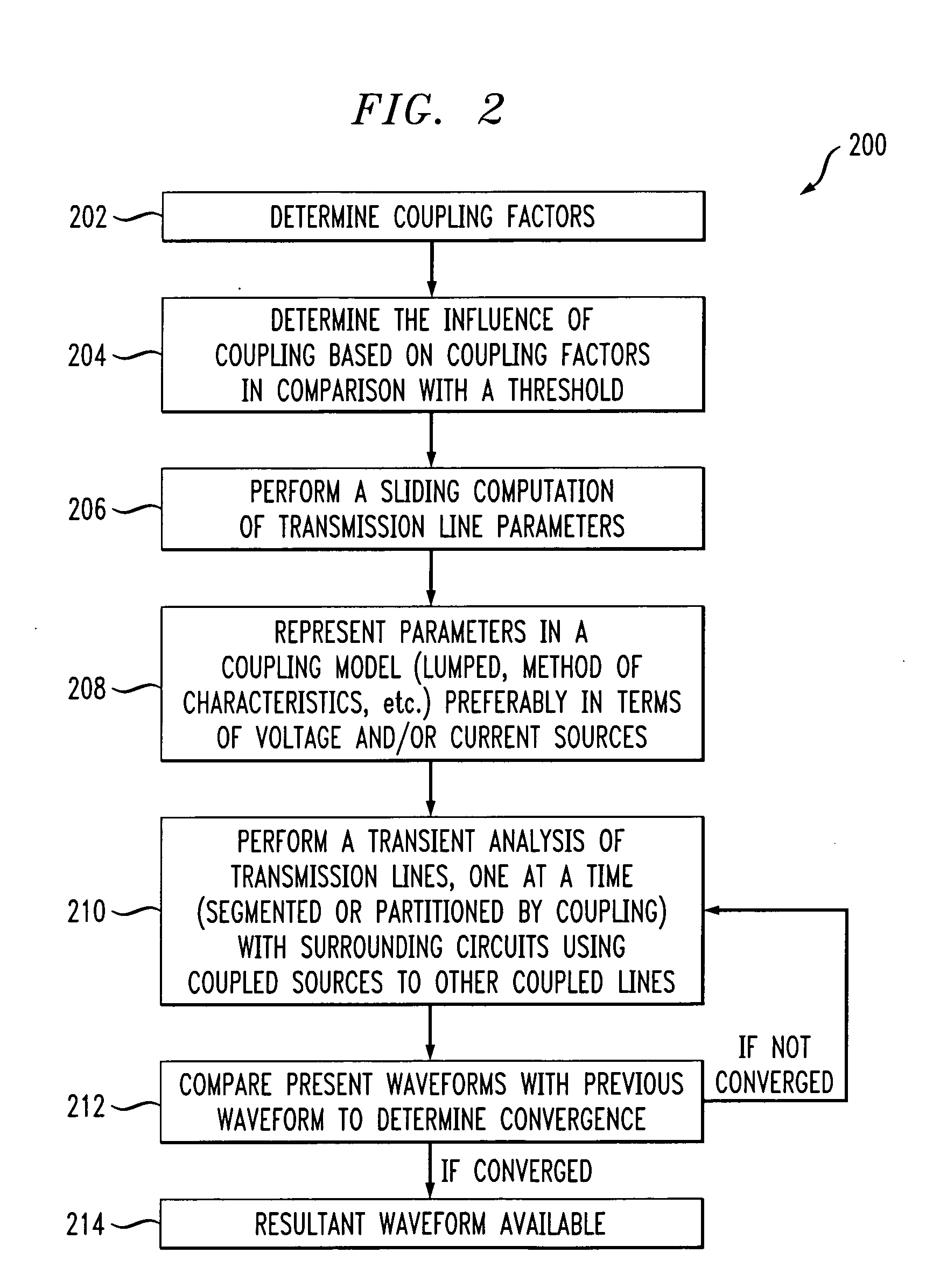Methods and apparatus for predicting convergence of a transversal waveform relaxation algorithm
a transversal waveform and relaxation algorithm technology, applied in waveguides, noise figures or signal-to-noise ratio measurement, instruments, etc., can solve the problems of increasing the complexity of coupling calculation, increasing the complexity of lines, and limited existing techniques for analyzing multiple wire transmission lines
- Summary
- Abstract
- Description
- Claims
- Application Information
AI Technical Summary
Benefits of technology
Problems solved by technology
Method used
Image
Examples
Embodiment Construction
[0015] The present invention provides methods and apparatus for determining a number of iterations needed for a solution computed by a Transversal Waveform Relaxation algorithm to achieve a given level of accuracy.
[0016]FIG. 1 is a block diagram illustrating a system 100 in which the present invention can operate. As shown in FIG. 1, an exemplary system 10 includes a computer 12, such as a personal computer or a mainframe. Computer 12 includes any interface devices known in the art. Computer 12 may include a plurality of modules or software packages that may be resident in the system or coupled thereto via a network or the like. For example, computer 12 may be provided access to electronic design automation (EDA) libraries or other circuit databases 14, which include electrical circuits or integrated circuit chip designs.
[0017] A module 16 may include one more programs or subroutines for carrying out methods in accordance with the present invention. Module 16 may include transmiss...
PUM
 Login to View More
Login to View More Abstract
Description
Claims
Application Information
 Login to View More
Login to View More - R&D
- Intellectual Property
- Life Sciences
- Materials
- Tech Scout
- Unparalleled Data Quality
- Higher Quality Content
- 60% Fewer Hallucinations
Browse by: Latest US Patents, China's latest patents, Technical Efficacy Thesaurus, Application Domain, Technology Topic, Popular Technical Reports.
© 2025 PatSnap. All rights reserved.Legal|Privacy policy|Modern Slavery Act Transparency Statement|Sitemap|About US| Contact US: help@patsnap.com



